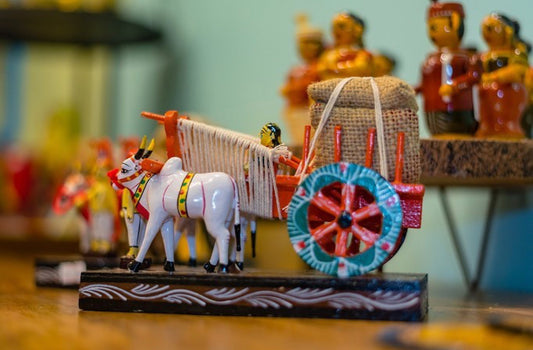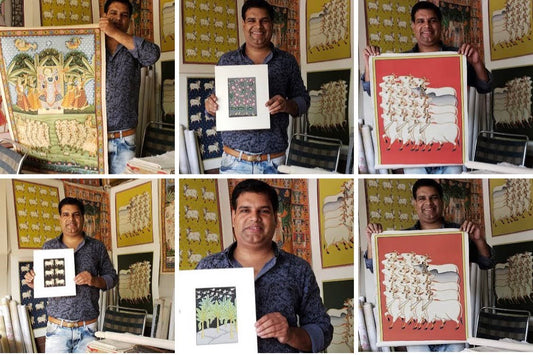News

Wrought Iron - A new age wall decor
Metal wall art is definitely the new age décor. It has taken over the traditional wall art paintings and regular hangings. Metal hangings and metal sculptors look chic and profusely stylish. It...
Wrought Iron - A new age wall decor
Metal wall art is definitely the new age décor. It has taken over the traditional wall art paintings and regular hangings. Metal hangings and metal sculptors look chic and profusely stylish. It...


PICHWAI - The Pride of Nathdwara
The word Pichwai comes from 'pichh' meaning back, and 'wai', meaning textile hanging. They are made by members of the Pushti Marg sect, founded by Shri Vallabhacharya in the 16th...
PICHWAI - The Pride of Nathdwara
The word Pichwai comes from 'pichh' meaning back, and 'wai', meaning textile hanging. They are made by members of the Pushti Marg sect, founded by Shri Vallabhacharya in the 16th...

Indian Government boosts 150 years old Jute ind...
In order to help the jute industry, the government on Thursday decided that 100% food grains and 20% sugar will be mandatorily packaged in jute bags. Information and Broadcasting Minister...
Indian Government boosts 150 years old Jute ind...
In order to help the jute industry, the government on Thursday decided that 100% food grains and 20% sugar will be mandatorily packaged in jute bags. Information and Broadcasting Minister...

Handmade Puppets - Kathputli
If the Indian map was depicted by its craft clusters, it would be a vibrant diamond, housing pockets of handicrafts along its length and breadth. The map would feature deep...
Handmade Puppets - Kathputli
If the Indian map was depicted by its craft clusters, it would be a vibrant diamond, housing pockets of handicrafts along its length and breadth. The map would feature deep...

From Survival to Flourishing - Tapping the Gold...
As one of the largest employment generators after agriculture, Indian handicraft sector is a key means of livelihood to India’s rural and urban population. The need of the hour is a...
From Survival to Flourishing - Tapping the Gold...
As one of the largest employment generators after agriculture, Indian handicraft sector is a key means of livelihood to India’s rural and urban population. The need of the hour is a...
